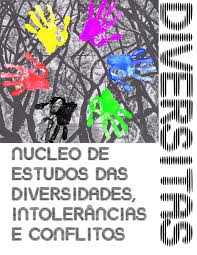O não pertencimento: Identidades femininas abjetas na ficção gótica
Resumo
A abjeção é um recurso narrativo central ao gótico, um gênero que lida com toda ordem de perturbações, terrores, purezas e ambiguidades para questionar o poder de amarras culturais. É, ainda, um processo central à constituição e interrelação de identidades de gênero, sendo compreendida como a exclusão de identidades que desafiam a inteligibilidade heterossexual e os imperativos culturais que ditam a construção da feminidade e suas representações. A análise de dois romances góticos, Cat’s Eye, da escritora canadense Margaret Atwood, e Ciranda de Pedra, da escritora brasileira Lygia Fagundes Telles, objetiva discutir figurações da abjeção na ficção gótica e abordar o funcionamento de tal processo na performatividade de identidades femininas que desafiam e subvertem imagens culturalmente compartilhadas de feminidade.
Palavras-chave
Texto completo:
PDF (English)Referências
ATWOOD, Margaret. Cat’s eye. New York : Bantam Books, 1989.
ATWOOD, Margaret. Surfacing. New York : Anchor Books, 1998.
ATWOOD, Margaret. Survival: a thematic guide to Canadian Literature. Toronto : McClelland & Stuart, 2004.
BEAUVOIR, Simone. The second sex. H. M. Parshley (Trad.). Great Britain : Lowe and Brydone LTD., 1956.
BURKE, Edmund. A philosophical enquiry into the origins of our ideas on the sublime and beautiful. New York : Oxford University Press, 1998.
BUTLER, Judith. Bodies that matter: on the discursive limits of sex. New York : Routledge, 1993.
BUTLER, Judith. Gender trouble: feminism and the subversion of identity. New York : Routledge, 1990.
COPATI, Guilherme; LaGUARDIA, Adelaine. A errância e o gótico em Ciranda de pedra. Revista Interdisciplinar, v. 18, n. 01, 2013. p. 239-250.
DOUGLAS, Mary. Purity and danger. New York : Routledge, 2001.
FIRESTONE, Shulamith. The dialectic of sex: the case for feminist revolution. New York : Bantam Books, 1972.
FOUCAULT, Michel. História da sexualidade. V. 1: A vontade de saber. José Augusto Guilhon Albuquerque e Maria Thereza da Costa Albuquerque (Trads.). Rio de Janeiro : Graal, 2007.
FREUD, Sigmund. “O estranho”. In: Edição Standard brasileira das obras de Sigmund Freud. São Paulo: Imago, 1987. p. 275-318.
GIBSON, Graeme. Eleven Canadian novelists. Michigan : University of Michigan Press, 1972.
HOGLE, Jerrold E. Introduction: the gothic in Western culture. In: The Cambridge companion to gothic fiction. Cambridge : Cambridge University Press, 2002. p. 01-20.
KRISTEVA, Julia. Powers of horror: an essay on abjection. New York : Columbia University Press, 1982.
MOERS, Ellen. Female gothic. In: Literary women: the great writers. New York : Oxford University Press, 1985. p. 90-98.
PUNTER, David. The literature of terror: a history of gothic fictions from 1765 to the present day. V. 1. The gothic tradition. London : Longman, 1996.
RICHARDS, Nelly. Feminismo e desconstrução: novos desafios críticos. In: Intervenções críticas. Arte, cultura, gênero e política. Belo Horizonte : Editora UFMG, 2002. p. 156-172.
RUBIN, Gayle. The traffic in women: notes on a political economy of sex. In: RIVKIN, Julie; RYAN, Michael. Literary theory: an anthology. Malden : Blackwell, 2004. p. 533-559.
SEDGWICK, Eve Kosofsky. Epistemology of the closet. Los Angeles : University of California Press, 1990.
SNODGRASS, Mary Ellen. Encyclopedia of Gothic Literature. New York : Facts on file, 2005.
TELLES, Lygia Fagundes. Ciranda de pedra. Rio de Janeiro : Rocco, 1998.
WILLIAMS, Anne. Art of darkness: a poetics of gothic. Chicago : The University of Chicago Press, 1995.
Apontamentos
- Não há apontamentos.
ISSN eletrônico: 1984-5677
ISSN impresso: 1519-0994





















